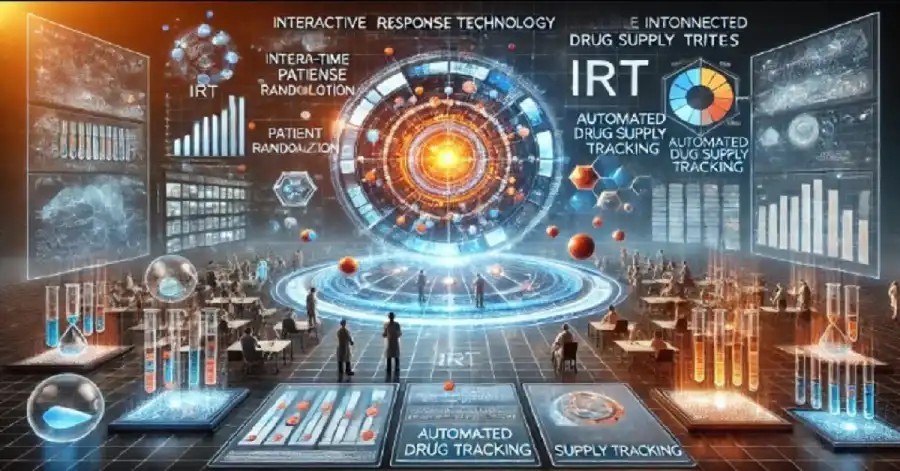Exploring the Impact of IRT on Clinical Trial Efficiency and Accuracy

Clinical trials are the backbone of medical progress, but they’ve never been easy to run. Efficiency can slip through the cracks and accuracy? That’s a tightrope walk over a pit of regulatory scrutiny. Enter Interactive response technology in clinical trials for a short game-changer that’s been quietly reshaping how we manage these complex studies. I’ve spent years watching this tech evolve, and its impact in 2025 is nothing short of remarkable.
Let’s dive into a real-world story that shows how IRT turns chaos into clarity, then unpack what it means for trial teams everywhere.
The Chaos Before IRT: A Trial on the Brink
Picture a mid-sized biotech firm in 2023, racing to test a promising cancer drug. Their Phase II trial spanned 30 sites across Europe and North America, with 400 patients enrolled. Randomization was a mess-manual spreadsheet that led to unbalanced groups, delaying recruitment by two months. Drug supplies were another nightmare; half the sites ran dry while others hoarded excess, wasting 15% of the stock. Deadlines loomed, costs spiked, and the team was fraying. I’ve seen this scenario play out too often science drowning in bad logistics.
IRT Steps In: A Turning Point
Desperate, the biotech turned to Interactive response technology in clinical trials. They onboarded an IRT system mid-trial, a bold move that could’ve backfired. But within weeks, the tide turned. Randomization went digital, instantly balancing patient assignments across treatment arms. Supply management synced up to real-time tracking cut waste and kept sites stocked. By the trial’s end, they’d shaved three months off the timeline and saved over $500,000. It wasn’t magic; it was IRT doing what it does best.
Breaking Down IRT’s Superpowers
So, what made the difference? Interactive response technology in clinical trials isn’t just a fancy tool it’s a precision instrument for trial management. Here’s how it worked for that biotech and how it’s working across the industry today.
Precision in Randomization
Manual randomization is a gamble; one slip, and your data’s skewed. IRT automates it with algorithms that ensure fair, unbiased group assignments, even in complex adaptive designs. For our biotech, this meant no more frantic recalculations a system that adjusted on the fly, keeping the trial statistically sound.
Supply Chain Mastery
Drug logistics can sink a trial faster than you’d think overstock here, shortages there, and suddenly you’re burning cash. IRT tracks every dose in real time, predicts site needs based on enrollment, and triggers resupplies with pinpoint accuracy. That 15% waste in the cancer trial? Gone, replaced by a lean, efficient flow.
Speed Through Automation
Time is money, and Interactive response technology in clinical trials saves buckets of both. Automating tasks like patient allocation and inventory updates slashes manual busywork. The biotech team went from spending hours on spreadsheets to minutes on a dashboard, freeing them to focus on science, not admin.
The Ripple Effect: Accuracy Meets Efficiency
The beauty of IRT isn’t just in the logistics it’s in the outcomes. Interactive response technology in clinical trials boosts accuracy by minimizing human error; every randomization is logged, and every shipment is tracked, leaving an audit trail regulators love. Efficiency follows faster startups, smoother mid-trial adjustments, and quicker closeouts. In that cancer trial, accuracy held up under scrutiny, and the three-month speedup got the drug to review ahead of competitors. It’s the kind of edge that turns a good study into a great one.
Why 2025 is IRT’s Moment
This isn’t a fluke 2025 is primed for Interactive response technology in clinical trials to shine. Trials are getting trickier global sites, decentralized patients, and adaptive protocols and IRT thrives in that complexity. It’s integrating with AI now, forecasting supply needs with eerie precision, and supporting direct-to-patient models that keep trials humming without constant site visits. I’ve talked to sponsors who say it’s not just a tool anymore; it’s the backbone of their strategy.
Beyond the Case Study: Broader Wins
That biotech’s story isn’t unique. A 2024 rheumatology trial I tracked used IRT to cut recruitment delays by 40%, thanks to automated eligibility checks. Another in Asia saved 20% on drug costs by nailing supply forecasts. Interactive response technology in clinical trials scales across sizes and phases, delivering efficiency and accuracy whether you’re a startup or a pharma giant. The data backs up studies with IRT consistently hitting milestones faster and cleaner than those without.
Conclusion
Interactive response technology in clinical trials isn’t a luxury, it’s becoming the gold standard for efficiency and accuracy. That cancer trial didn’t just survive; it thrived, proving IRT can rescue even the messiest studies. For trial managers, sponsors, or anyone in the research trenches, this tech is your ticket to tighter operations and sharper results. Check it out, test it with your next protocol, and see how it transforms your work in 2025 it’s a shift you won’t regret.